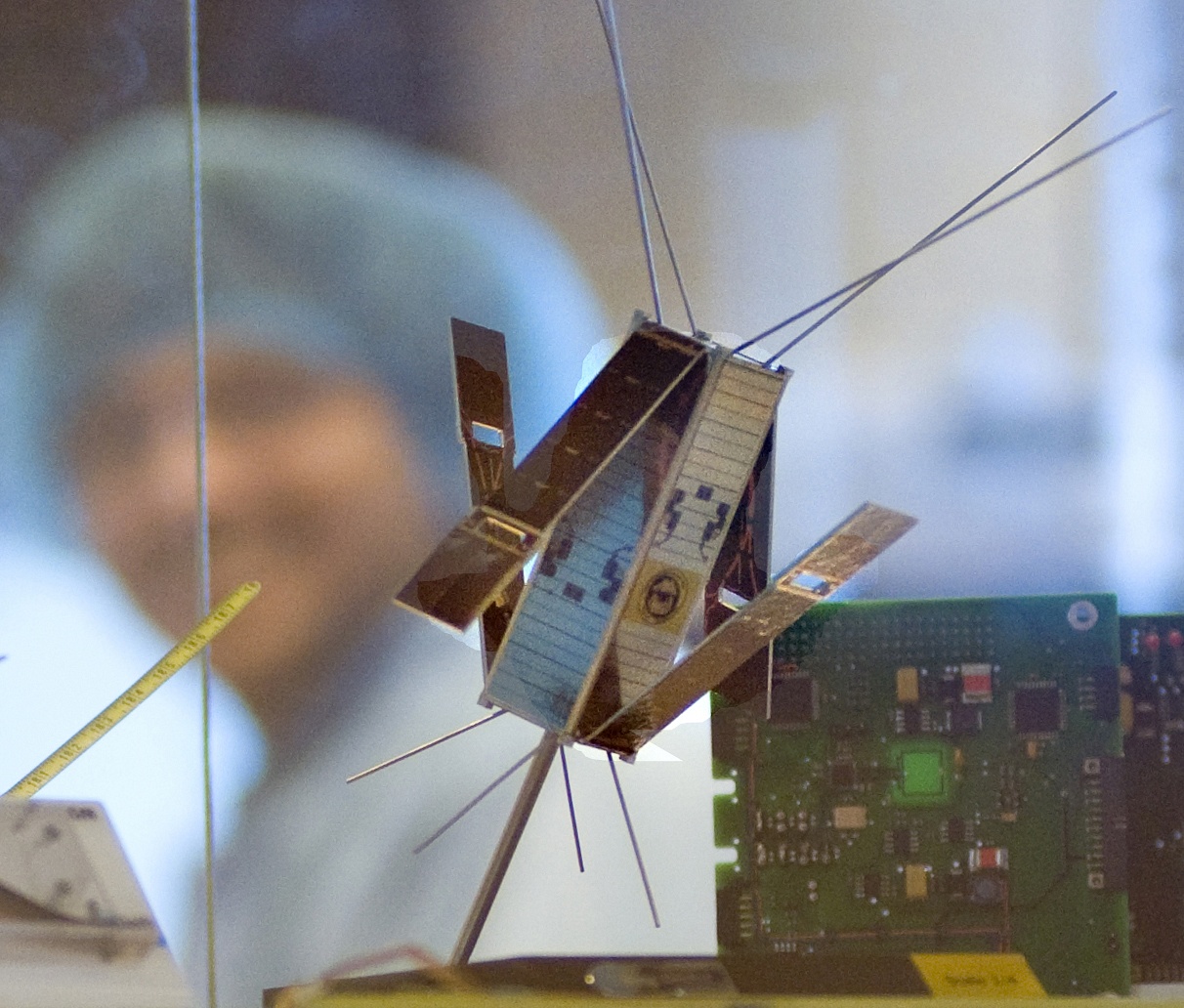Hydrazine, one of the most widely used rocket propellants, is toxic and severely carcinogen. Why not use water instead? Delft researchers are working on a new propulsion concept for ice-propelled nanosatellites.
Angelo Cervone, Barry Zandbergen and their team of researchers at the Faculty of Aerospace Engineering described a simple and reliable propulsion system that uses water ice for nanosatellites. Once in space, the ice, stored at very low pressure (less than 1% of the atmospheric pressure at sea level), sublimates and releases vapour molecules. Some of these water molecules bounce against a hot plate to gain speed before escaping into outer space, thereby generating thrust.
Nanosatellites are spacecraft with a launch mass lower than 10 kg. They are cheap and popular for student projects. About 200 nanosatellites are currently in orbit, two of which are from TU Delft; Delfi-C3 (2008) and Delfi-n3Xt (2013). The next step in nanosatellites is an on-board micro-propulsion system.
While most research groups in this field focus on accelerating charged particles (typically of an inert gas) as a means of thrust, the Delft researchers thought of water. “We did calculations and simulations proving that our micro-propulsion device using ice can deliver an excellent performance”, said Cervone. The challenge is to keep the water frozen. In space, the satellite itself is still kept at ambient temperature (usually between 0 and 30°C) by its thermal control system, but the outside environment is very cold (about -270 °C) which helps to efficiently freeze the water inside the tank.



Comments are closed.